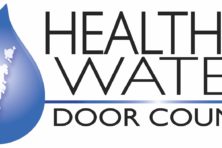No Surprises in Well Testing
- Share
- Tweet
- Pin
- Share
The 152 households in the towns of Jacksonport, Sevastopol and Sturgeon Bay who took part in the Center for Watershed Science and Education’s well water testing program earlier this summer should have received their results in the mail this week, but they can learn more about those results with members of the center at 6 pm Tuesday, Aug. 19, at Sevastopol’s Town Hall.
“We weren’t surprised by anything in this one,” said Kevin Masarik of the Center for Watershed Science and Education at the University of Wisconsin – Stevens Point & UW – Extension.
Masarik said 152 participants was an excellent turnout for the three municipalities.
Three types of tests were offered: The homeowner package tests for bacteria, nitrate, pH, alkalinity, hardness, chloride, conductivity and corrosivity. The metals package tests for 11 metals, from arsenic to sulfate. The third package is called a DACT screen, and it tests for agricultural chemicals.
“The vast majority of people chose to do all three tests,” Masarik said.
The good news from the testing is that “We didn’t see a lot in the way of nitrates,” Masarik said.
Nitrate is the most common chemical contaminant in Wisconsin groundwater. Sources include fertilizers, septic systems and manure.
“I believe we only had one sample out of the 152 that were above the standard for nitrate,” he said. “That was something of a positive, and not totally unexpected. It’s definitely not the norm. Statewide we’d expect about one out of every 10 to be above. If we’re looking at 1 out of 152, that’s quite a bit better than the statewide average when it comes to byproducts of fertilizer or septic systems.”
The bad news is that Door County groundwater is particularly susceptible to bacterial infection.
“Anybody with a private well in that part of the state – Door County, anywhere along the Niagara Escarpment – water quality is always a little bit more of a concern because with the carbonate rock, it’s such a susceptible geology for various types of problems or contamination,” Masarik said. “Bacteria is something people should always be aware of and pay some attention to. It’s somewhat tricky of a test because it’s only a snapshot in time. The one thing we found out in Kewaunee County, an area with a somewhat similar geology, the test can sometimes offer a false sense of bacteriological safety for the water supply.”
One test a year is not enough when testing for bacteria, especially when the water is used for drinking in a susceptible area, Masarik said.
“I think that’s the real story, even though the percentage of positive bacteria wasn’t that unusually high, that’s always going to be the real emphasis in Door County,” he said. “People might want to consider testing more than annually for a year or two, just to understand what the bacteriological quality looks like at different points in the year. That’s something that can fluctuate. Even as rapidly as a couple days, after a large rainstorm or a snowmelt. Just understanding how the bacteriological integrity fluctuates during the year is something people might want to be aware of.”
Masarik said the Aug. 19 meeting will be a time to interpret any results you don’t understand and to ask questions.
“We’ll also display a series of maps which will help us relay the local groundwater quality based on what we learned from this sampling, kind of a snapshot in time of the groundwater quality in those three towns,” Masarik said. “If people have questions, let’s say they detected something wrong, we’ll be there to answer questions and provide information about what those next steps look like.”



